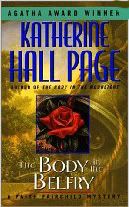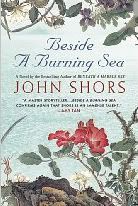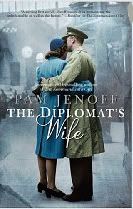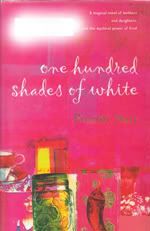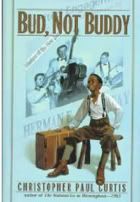January25
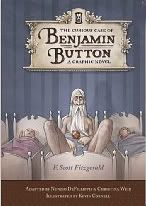 The Curious Case of Benjamin Button
The Curious Case of Benjamin Button
Short story by F. Scott Fitzgerald; Graphic novel version by Nunzio DeFilippis & Christina Weir; Illustrated by Kevin Cornell
When Fitzgerald penned Benjamin Button in 1922, he enthusiastically called it “the funniest story ever written” and hoped to write more pieces like it and The Diamond as Big as the Ritz. Publishers and the public, however, had a different idea as evidenced by an anonymous letter by a reader in Cincinnati:
Sir–I have read the story Benjamin Button in Colliers and I wish to say that as a short story writer you would make a good lunatic. I have seen many peices (sic) of cheese in my life but of all the peices of cheese I have ever seen you are the biggest peice. I hate to waste a peice of stationary on you but I will.
I had a somewhat more favorable reaction to the story of the unfortunate Mr. Button, who was born an old man and grew younger rather than older.
I was unable to find a copy of the full text of Fitzgerald’s story, but the graphic novel edition purports to be “complete with Fitzgerald’s original text”. I suspect that the text included was indeed the author’s but I’m not convinced that it was the full text of the story since Fitzgerald tended to be wordy. Nonetheless, there was more than enough, along with the illustrations and the speech bubbles, to tell the story in detail.
The 2008 movie starring Brad Pitt and Cate Blanchett was a tour de force of digital enhancement. It won Academy Awards for Art Direction, Makeup and Visual Effects, as well it should have. (Rent DVDs online with Zip.ca or Blockbuster.com
or Blockbuster.com  )
)
Critics were divided, some (NY Times, Variety) seeing it as a wonderful film and others, not so. I’m on the side of the Times.
Generally, I like movies that are based on books to stick fairly closely to the original. In this case, I’m willing to make an exception. Other than the title and the general concept of a man “aging” younger, there are NO similarities between Fitzgerald’s story (hereafter called the “book”) and the film.
In the book, Benjamin was born in a Baltimore hospital in 1860, as fully grown adult–a seventy-year-old man–who can talk & thinks like an adult. He’s raised by his father, spending company in his early days with his elderly grandfather. When he is in his early twenties, and appears about fifty, he marries a younger woman who likes “older men”. As the years pass, Benjamin loses interest in his wife as she becomes middle-aged and he grows younger.
His troubles applying to Yale (at 18 but looking 60), his time in the army during the Spanish-American War that began in 1898, his subsequent years as a football hero at Harvard (at 60 but looking 18), and his attempt at re-enlistment in 1914 for the Great War are wryly comically portrayed by Fitzgerald.
As the years progress, Benjamin hands over the family Wholesale Hardware business to his son Roscoe, and as an moody adolescent ends up living with Roscoe and eventually attends kindergarten with his grandson as he thinks more and more like a child.
The movie has Benjamin being born in 1918 in New Orleans as a wizened baby who is literally thrown away by his father and lands on the steps of an old-age home where he is taken in by one of the attendants and raised as her own.
The old age home is a clever device – who would question an old man there, even if he acted like a three year old, which he did, since the movie version has Benjamin born as a child physically and mentally. That works until dementia sets in when he looks about 12 years old. Then the script picks up the book’s version of his regressing intellect & knowledge.
The love story that is central to the movie version is completely an invention of the screenwriter, and is completely opposite to what happens in the book.
And the movie version made the elder Mr. Button’s fortune the result of buttons, rather than hardware. You decide if that clever or if it’s cheesy. I rather liked it. After all, the whole story is a fantasy.
Differences aside, I greatly enjoyed the movie and much of my enjoyment came from the period sets throughout the twentieth century. Some critics make the charge that the movie is too long, coming in at just under three hours, but I think that it needs that time to progress through the decades and to tell Benjamin’s story: a man who seemed not greatly affected by major history (other than the World Wars) and who just seemed to have life happen to him, rather than to make life happen.
Brad Pitt played Brad Pitt – in various make-ups and with a multitude of digital enhancement, both to look young and to look old. Cate Blanchett, also the recipient of age-altering techniques, was far more credible as Daisy (a tip of the hat to Fitzgerald’s Great Gatsby name for his wife Zelda).
Although I was initially disappointed that I was able to get only this graphic issue of the story, I found the book to be a pleasure to read (and to re-read). It, no doubt, is true to the original story and makes it accessible to both younger and older readers alike.
The book reminded me of the Illustrated Classics of such books as the Prince and the Pauper that my brother & I devoured in the mid-sixties. But they were comic books. This is an elegant, 5.75 x 8.25 inch hardbound edition whose sepia toned pages are a treat to read.
My copy is overdue from my local library.
Benjamin Button satisfies three of my reading challenges: the Read the Book, See the Movie Challenge, the Support Your Local Library, and 100+.
Chapters/Indigo link for Canadian readers:
The Curious Case Of Benjamin Button And Other Jazz Age Tales

Or, even better, buy from an independent book seller by searching this site that has links to independent booksellers across North America.
P.S. If you click through the affiliate links in the book titles, you may notice a different cover. I like to see the cover that’s on the copy I read – and it’s usually different than Amazon.com because they display the American release, and I read the Canadian. Again, the links are affiliate links so I will receive a small percentage of any purchase you make after clicking through from this blog.


Technorati Tags: The Curious Case of Benjamin Button, F. Scott Fitzgerald, graphic novel, Cate Blanchett, Brad Pitt, 2008 Academy Award for Make-up, 2008 Academy Award for Visual Effects, 2008 Academy Award for Art Direction, growing younger, Hurricane Katrina, on-line movies in Canada, order movies on-line in Canada, DVDs by mail in Canada, DVDs by mail, Blockbuster online, Zip.ca, Nunzio DeFilippis, Christina Weir, Kevin Cornell
has been getting lots of buzz since its release in January of this year, so I was surprised at how quickly my hold request at the library produced this copy for me.
 Brown’s debut novel is the story of the Andreas sisters, Rose, Bean and Cordy—named for the Shakespearean characters Rosalind, Bianca and Cordelia–who have returned home to small town Barnwell, Ohio, ostensibly to help care for their mother who is undergoing treatment for breast cancer. Each of the three, however, have come to lick wounds from injuries that, although we the reader know immediately, each is unwillingly to divulge to her family. They take on their old roles within the family, while trying to reconcile these with the women they have become.
Brown’s debut novel is the story of the Andreas sisters, Rose, Bean and Cordy—named for the Shakespearean characters Rosalind, Bianca and Cordelia–who have returned home to small town Barnwell, Ohio, ostensibly to help care for their mother who is undergoing treatment for breast cancer. Each of the three, however, have come to lick wounds from injuries that, although we the reader know immediately, each is unwillingly to divulge to her family. They take on their old roles within the family, while trying to reconcile these with the women they have become. and was sorry to see the book end.


 Also unbeknownst to Lisa Fay (and system administrators), Meg is brain-damaged following a dental infection and unable to care for Wrecker. Len turns for help to his next-door neighbors at Bow Farm. There, in what amounts to be a commune, live Melody, Ruth, Willow and Johnny Appleseed. This motley crew agree to help out and find themselves falling for Wrecker. Eventually, Melody convinces Len to adopt Wrecker but to leave the actual raising of him to her.
Also unbeknownst to Lisa Fay (and system administrators), Meg is brain-damaged following a dental infection and unable to care for Wrecker. Len turns for help to his next-door neighbors at Bow Farm. There, in what amounts to be a commune, live Melody, Ruth, Willow and Johnny Appleseed. This motley crew agree to help out and find themselves falling for Wrecker. Eventually, Melody convinces Len to adopt Wrecker but to leave the actual raising of him to her. Set in 1919 British East Africa (now Kenya), amid colonial rule and racial unrest, Suzanne Arruda’s debut
Set in 1919 British East Africa (now Kenya), amid colonial rule and racial unrest, Suzanne Arruda’s debut 
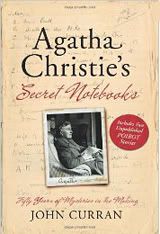 The notebooks contain character lists, suggested settings, and plot ideas and development, but until now they have been largely ignored, mainly because Christie’s handwriting is nearly illegible. As John Curran worked with the material in preparing
The notebooks contain character lists, suggested settings, and plot ideas and development, but until now they have been largely ignored, mainly because Christie’s handwriting is nearly illegible. As John Curran worked with the material in preparing 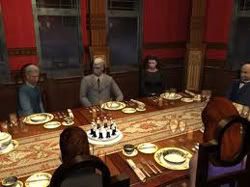
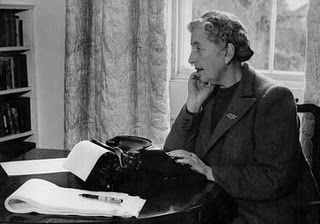

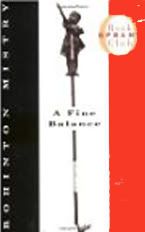

 Mistry has made India live. The heat, the dust, the hunger and the thirst, the crowding, poverty, disease, and corruption become real to the reader. Even so, we are appalled when Dina’s brother, a member of the urban merchant or commercial class, says:
Mistry has made India live. The heat, the dust, the hunger and the thirst, the crowding, poverty, disease, and corruption become real to the reader. Even so, we are appalled when Dina’s brother, a member of the urban merchant or commercial class, says: 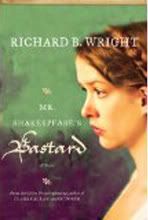 I have tried to not to measure the author’s subsequent works by that book, but I admit that my expectations were high when I started his latest offering,
I have tried to not to measure the author’s subsequent works by that book, but I admit that my expectations were high when I started his latest offering,  But the blurb also promises that “secrets are revealed, mysteries are uncovered, and futures are forever changed.” Sorry, I didn’t see that. What you’ve found out here is what happens. It’s a glimpse at seventeenth century England, especially London. There’s a brief introduction to Shakespeare, although he plays a minor role and is used mainly as a plot device (and title).
But the blurb also promises that “secrets are revealed, mysteries are uncovered, and futures are forever changed.” Sorry, I didn’t see that. What you’ve found out here is what happens. It’s a glimpse at seventeenth century England, especially London. There’s a brief introduction to Shakespeare, although he plays a minor role and is used mainly as a plot device (and title). 
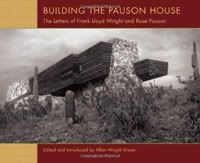 Told in the form of more than fifty previously unpublished letters written between 1938 and 1943–alongside rare site photographs and Wright’s architectural drawings–
Told in the form of more than fifty previously unpublished letters written between 1938 and 1943–alongside rare site photographs and Wright’s architectural drawings–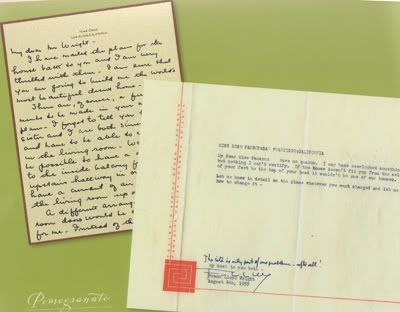 Building the Pauson House: The Letters of Frank Lloyd Wright and Rose Pauson
Building the Pauson House: The Letters of Frank Lloyd Wright and Rose Pauson


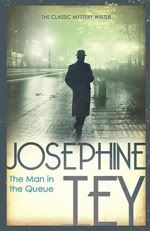 The first book in the series,
The first book in the series, 
 As someone who has lived through a successful PhD dissertation, I must admit that dusty old books and grand European libraries are welcome companions. Spending days perusing nineteenth-century French etiquette books in Paris’ Bibliothèque nationale was my idea of the perfect research adventure. All of that changed, however, when Madame Léon Grandin’s lively travel account of her stay in Chicago during the 1893 World’s Columbian Exposition fell into my lap.
As someone who has lived through a successful PhD dissertation, I must admit that dusty old books and grand European libraries are welcome companions. Spending days perusing nineteenth-century French etiquette books in Paris’ Bibliothèque nationale was my idea of the perfect research adventure. All of that changed, however, when Madame Léon Grandin’s lively travel account of her stay in Chicago during the 1893 World’s Columbian Exposition fell into my lap. 


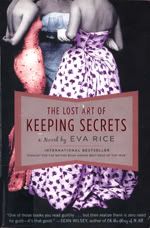
 I loved listening to those records but despite my best efforts, my friends never came to share my enthusiasm for Johnnie. Even their parents gave me odd looks. So I was delighted to be able to share the thrill of Johnnie with the two young protaganists of The Lost Art of Keeping Secrets, Penelope and Charlotte, who eventually score front row seats for Johnnie’s London concert.
I loved listening to those records but despite my best efforts, my friends never came to share my enthusiasm for Johnnie. Even their parents gave me odd looks. So I was delighted to be able to share the thrill of Johnnie with the two young protaganists of The Lost Art of Keeping Secrets, Penelope and Charlotte, who eventually score front row seats for Johnnie’s London concert.